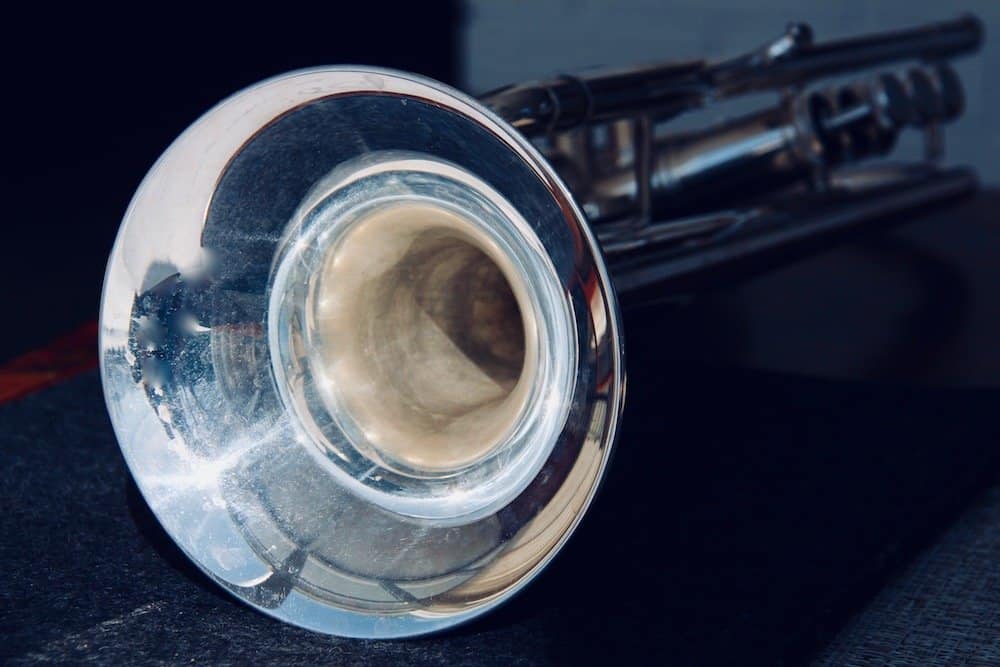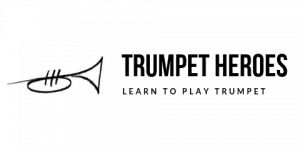Let’s Talk about Trumpet Mutes!
Most mutes are used to change how the Trumpet sounds, but they all have the effect of making it quieter as well. Composers don’t always take that into account, they just like having more tone qualities to play with.
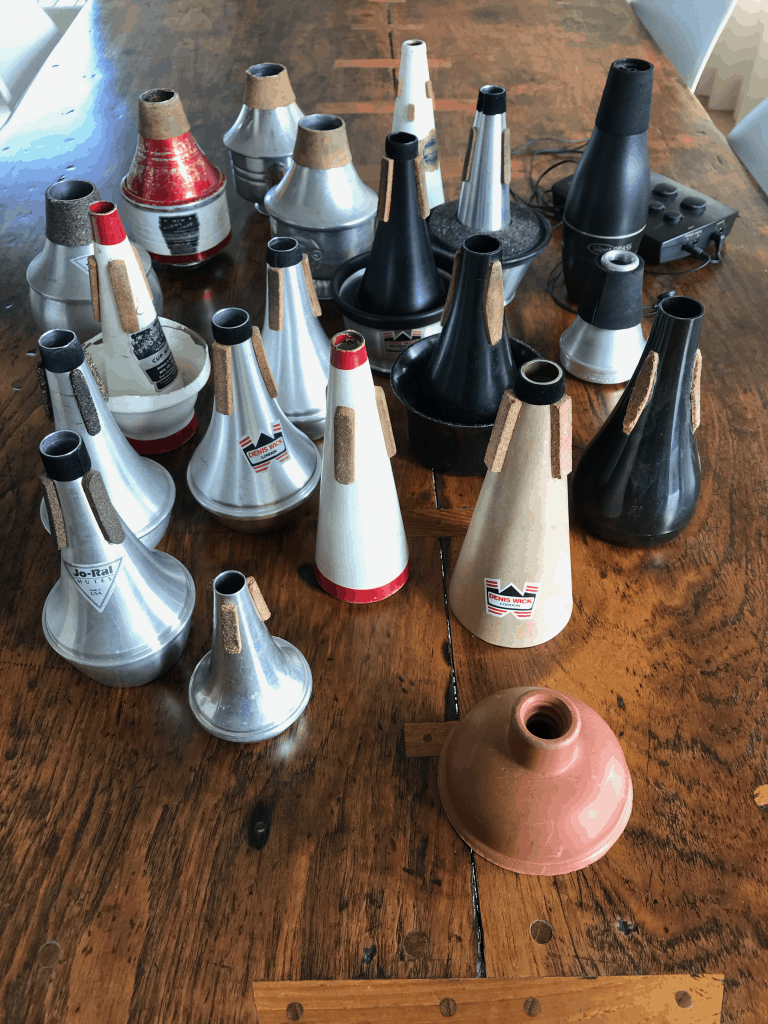
Mutes for Beginner Trumpet Players
If you’re just starting to play the trumpet you don’t likely need one for a year or so. Even an advanced high school player only needs three mutes and a plunger.
If you live with someone who is just starting to play the trumpet you might be interested in ensuring that they practise AND that they’re not so darn loud! If that’s the case scroll down to the section on Practise Mutes.
Straight Mute for Trumpet
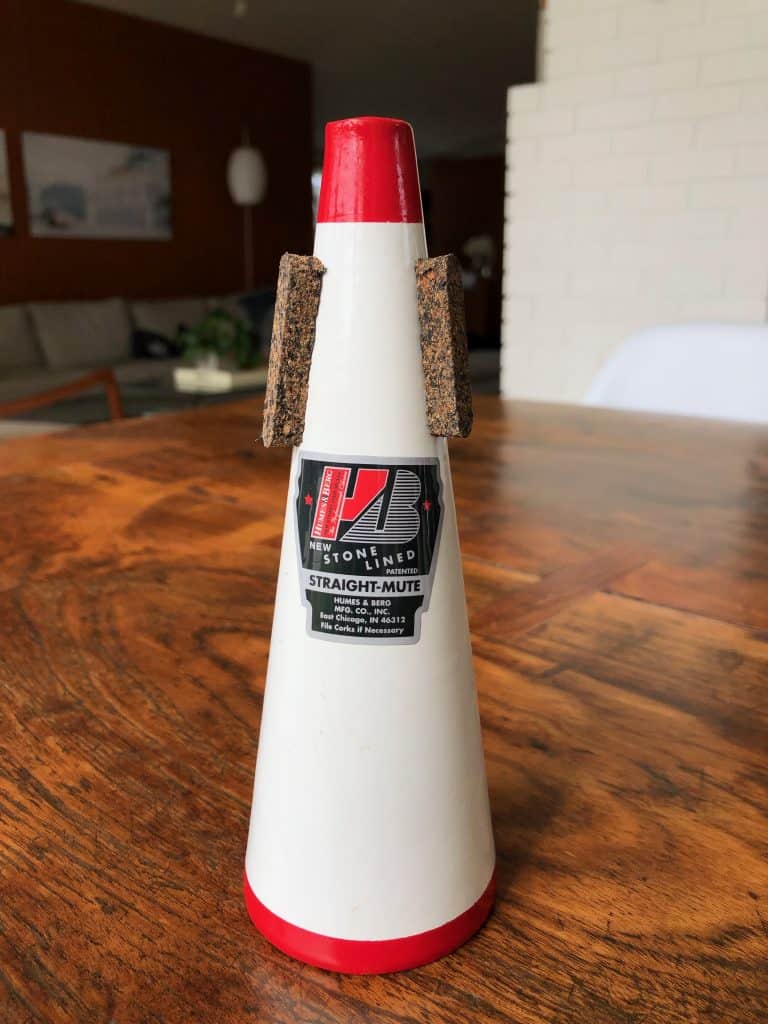
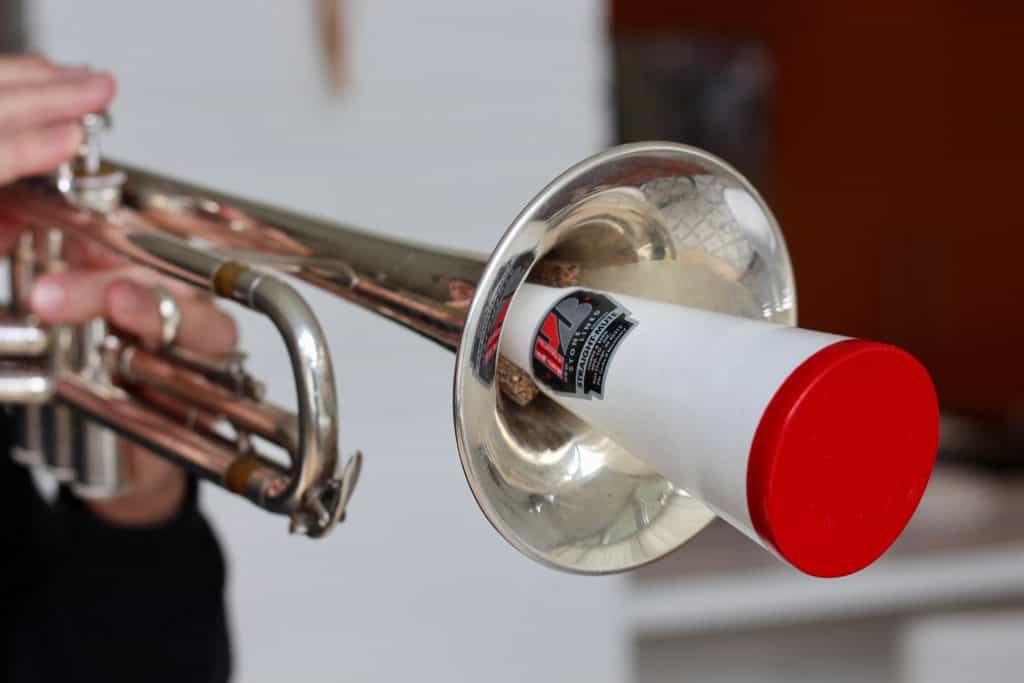
The first mute required by most Trumpet players is generally something called a “Straight Mute”. That’s in Quotation marks because many of them aren’t straight at all. The Straight mute is the most common Trumpet mute and is the go-to mute when the part just tells you to use a mute. Its purpose is to alter the tone quality, or Timbre of your instrument. It doesn’t make the Trumpet a whole lot quieter. I just tried one and there was a 9% drop in volume.
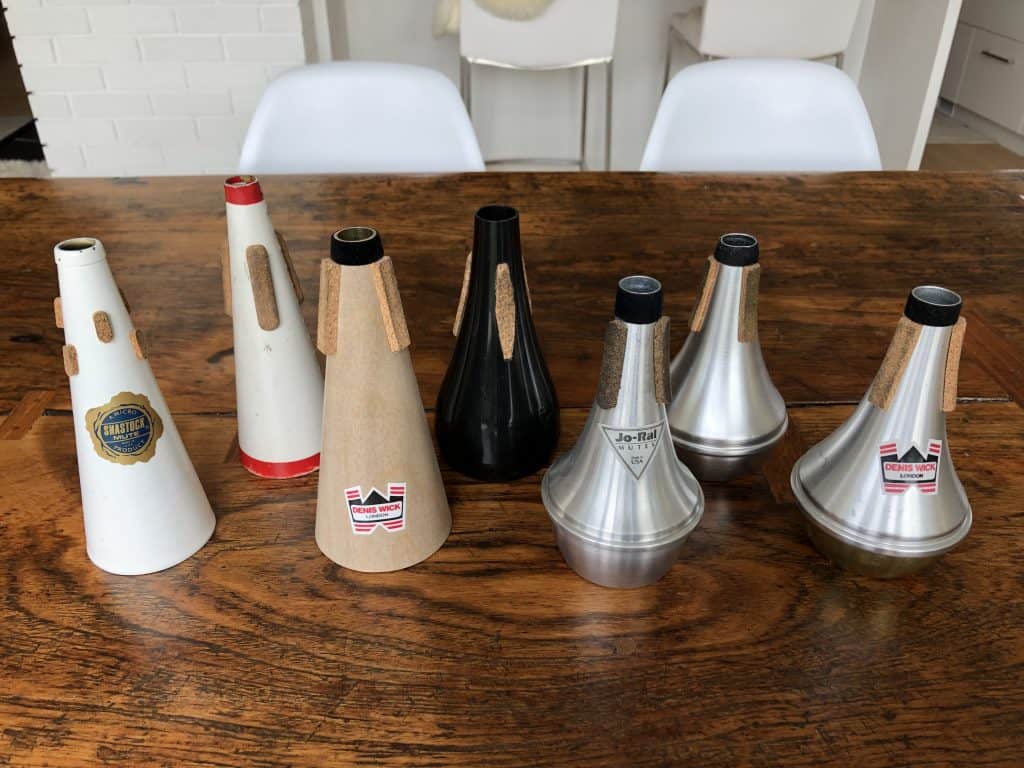
Cup Mute for Trumpet
The second most common mute is probably a Cup mute. I’ve had a few old ones fall apart and they were simply straight mutes with a cup stuck on the end. These days there are spun aluminium ones that are more bulbous, sound better and don’t make your pitch as wonky as the old ones. Some of them have adjustable cups and/or felt rings to give the player more timbral variety. A standard cup mute of mine drops the volume by 12%.
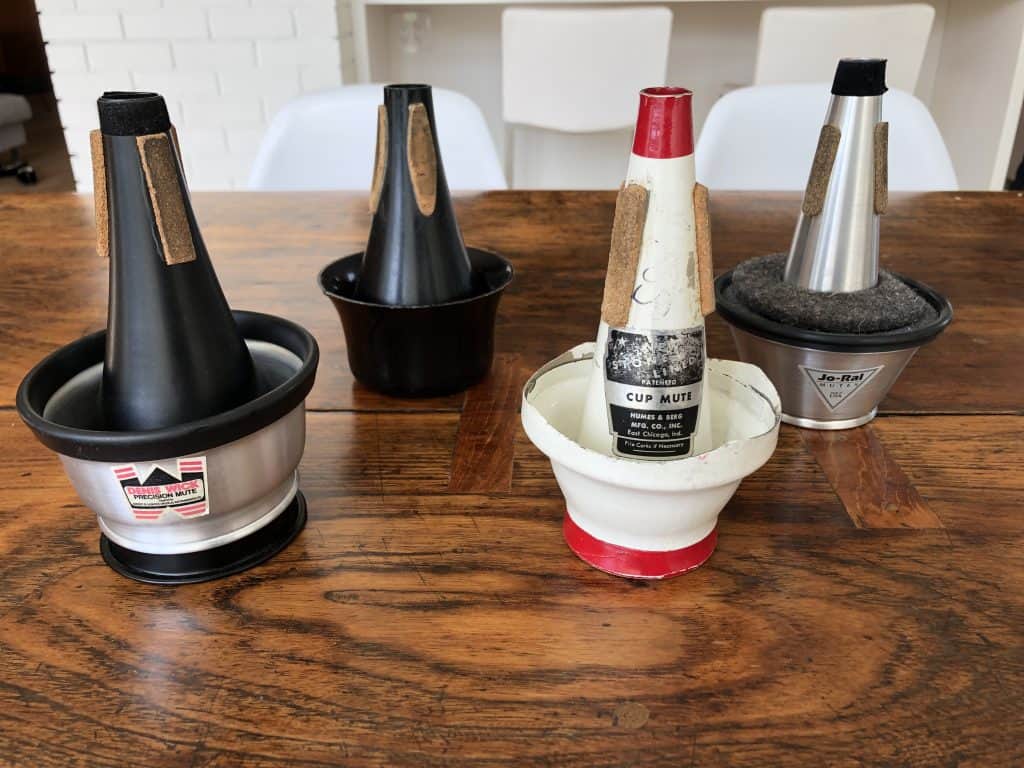
Harmon Mute for Trumpet
Jazz bands in many schools will want their Trumpet Players to have a Harmon mute as well. The stem on the end of the mute can be pulled out to change the timbre. Printed music usually specifies whether the stem should be in, out or removed. If your band director always wants the stem removed don’t throw it away – there are times when you might need it. This mute cuts your volume by about 25% with the stem removed, so it might serve as a practise mute.
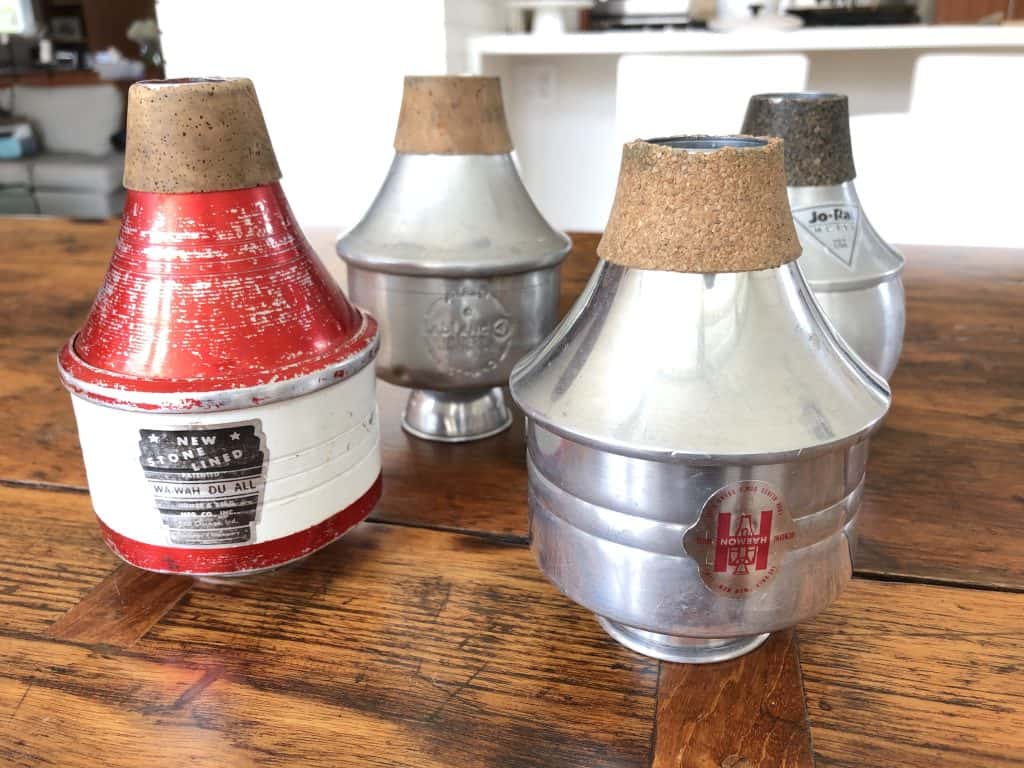
Other Specific Trumpet Mutes
While we’re near the subject of Jazz bands and mutes; there’s a variety of very specific, brand name mutes that you probably don’t need. During the Big Band Era that your great grandparents might have enjoyed, there were all kinds of mutes being called for.
The only one that I’ve really needed is a “Plunger Mute” and I have yet to buy one in a music store. I use a sink plunger (they’re smaller than a toilet plunger) that costs about a dollar. I used to carry a Bucket mute to Big Band gigs but the Cup mute with a felt ring sounds pretty much the same. Either that or just use a Flügelhorn, but that’s a whole other page.
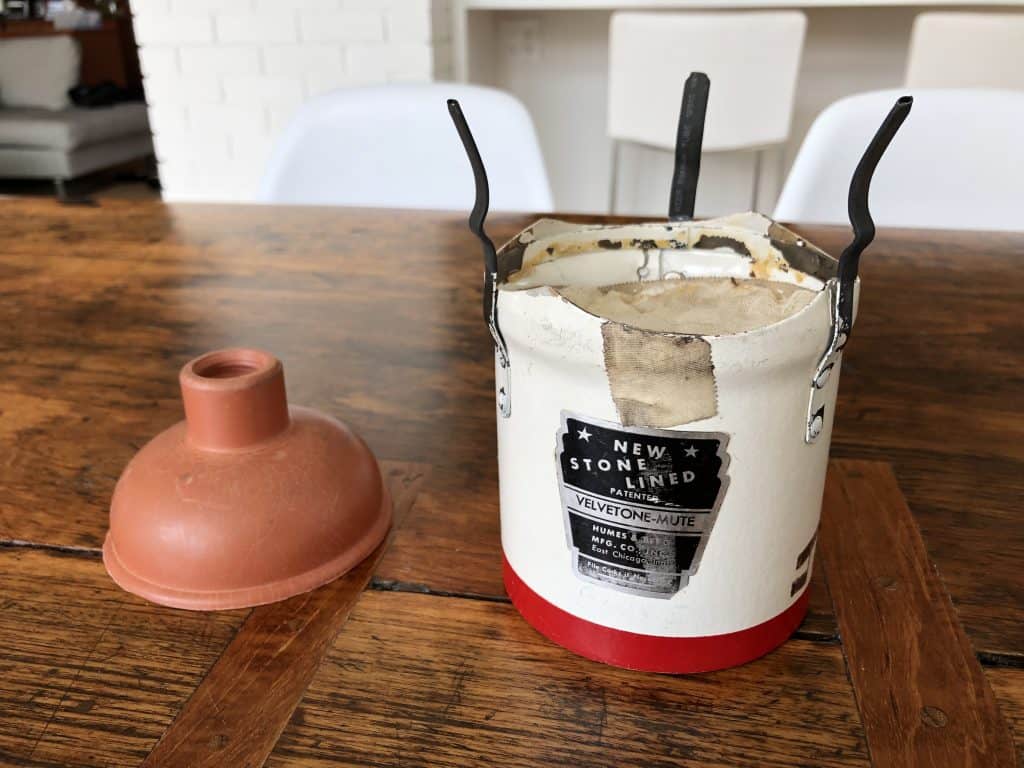
Practise Mute for Trumpet
Practise Mutes are kind of a subject unto themselves, but I’ll touch on a few here anyway. Several companies make simple
What they are good for is enabling you to
The one I use most cuts about 33% of the sound. I have one that cuts 50% of the sound in the room and sends it to an electronic belt pack that can do everything but windows. That one sticks pretty far out of the bell, so I only use it when I want to plug into something. I prefer the little one because it can fit inside the bell with the trumpet in my gig bag. (Gig-bag … a soft case)
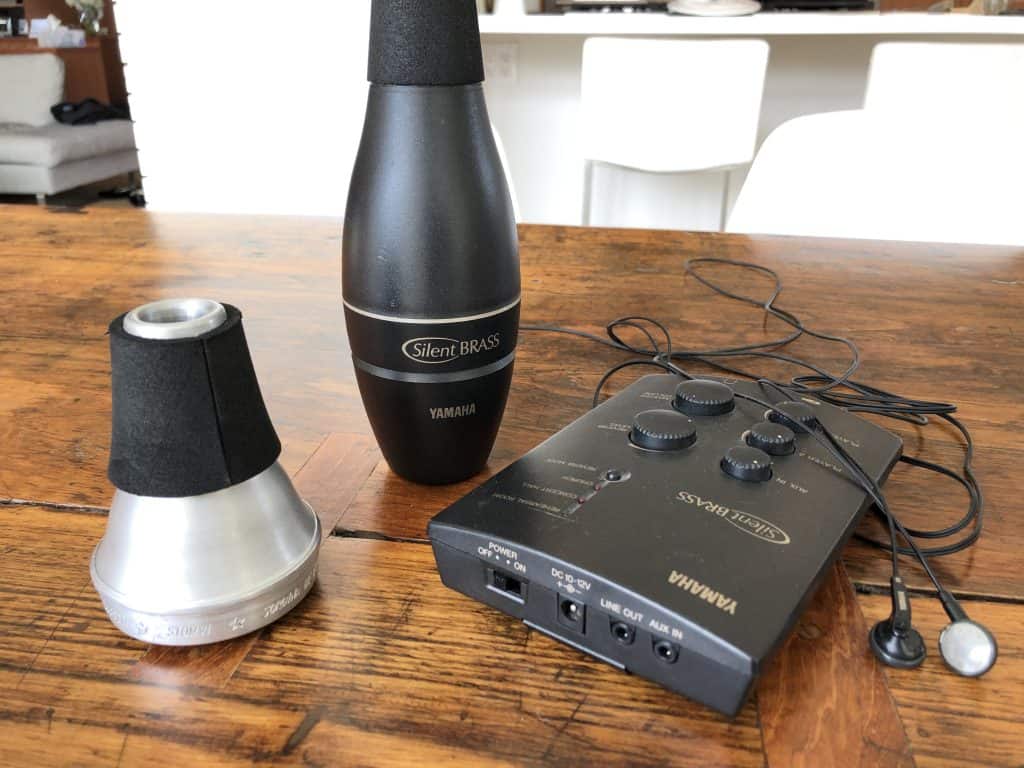
What’s in a Word?
Most modern publishers of sheet music ensure that it’s clear to you when to put a mute in and when to take it out. That has not always been the case, so there are times when you just have to take your best guess.
Some conductors/leaders will care as much as you do, some won’t. You can bet that the composer cared but somehow the information was lost on its way to you. Occasionally the mute instructions will not be in English – especially if you’re playing in an orchestra. Look for words like “Dampfer” and “Sourdine”. Below is a list of some of the instructions for “mute” in

When is a Mute not a Mute?
… when it’s something you might have handy. The two that get used a lot are “Hat” – where one simply hooks a hat over their bell and “In Stand” – when you point your bell at your music stand on purpose, using it to dull your sound. These and other instructions can appear in English, Italian or the composer’s language, but nowadays you can just use an online translator.
In the dark ages – before Google – you had to get a German-English dictionary to play a Mahler Symphony. Instructions like “mit aufgehobenum Shalltrichter” (with uplifted bell) are mixed in with Italian just to keep you on your toes. Playing into your stand should be practised with a tuner so that you can figure out just how close is too close. Eventually your pitch will go South on you.
